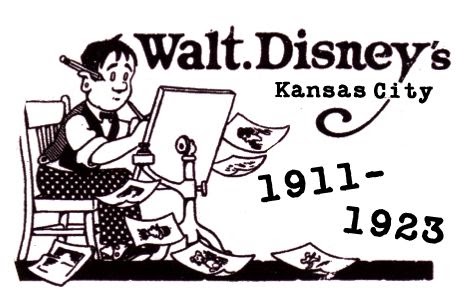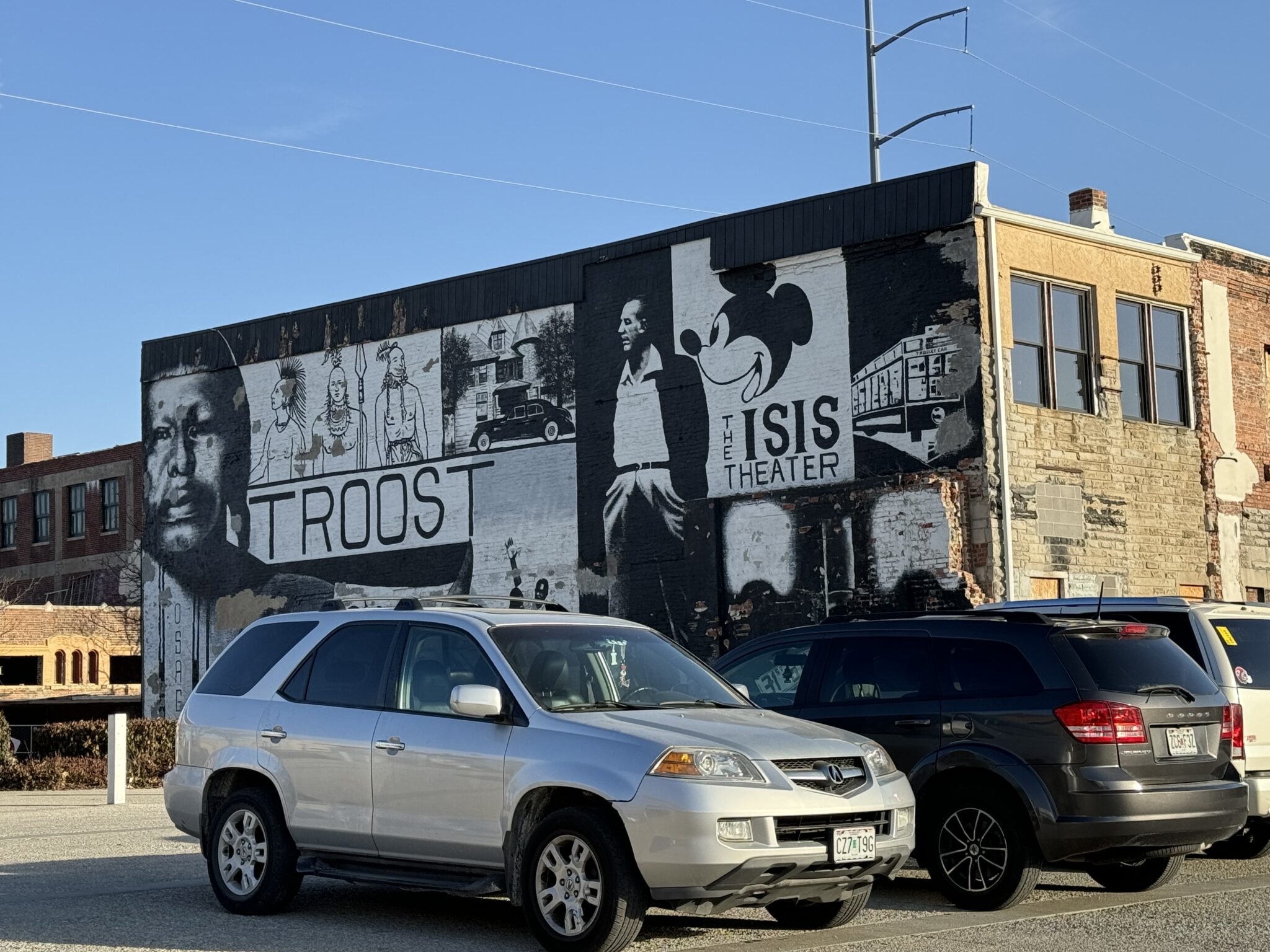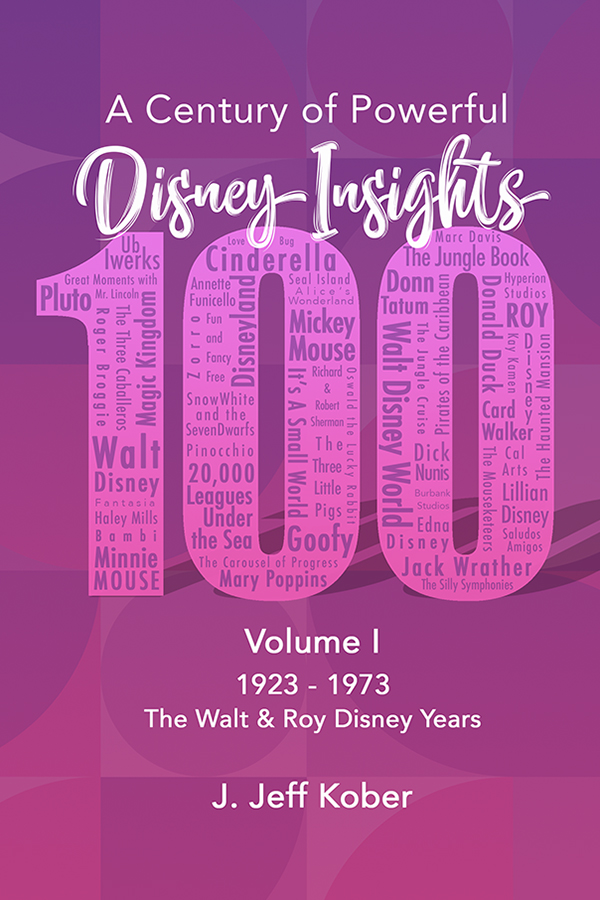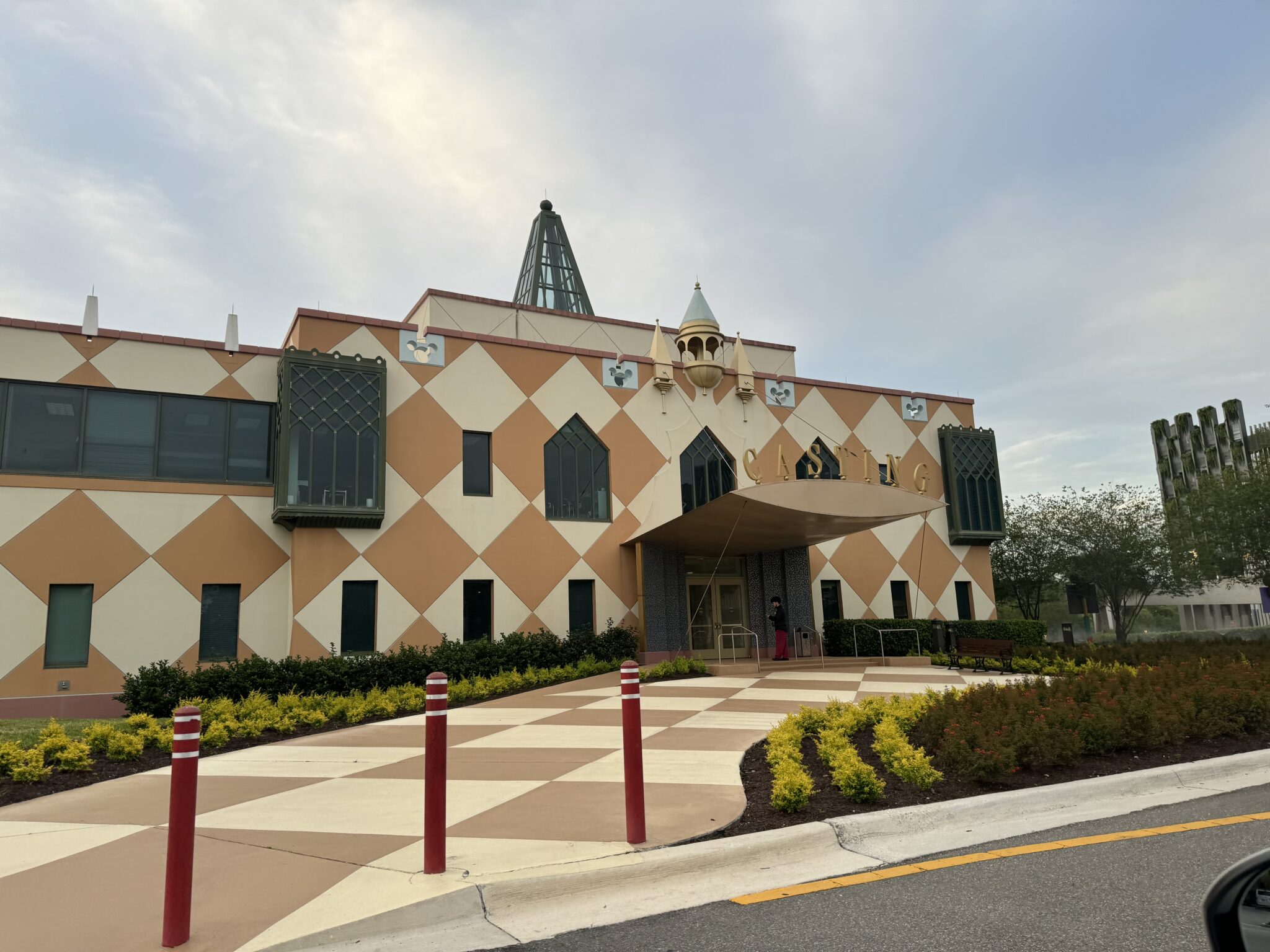Kansas City: Early Lessons for Walt and Roy Disney

This last week a business program I delivered took me to Kansas City, where Walt moved to around age 10, and where he returned to after serving in the Red Cross during World War I. If Disneyland’s Main Street U.S.A. symbolizes Marcelline, Missouri, then Walt Disney World’s Magic Kingdom Main Street should symbolize Kansas City. We’ll talk about the sights I saw and the impressions I had. It is a story of family struggles, of bankruptcy and dreams of a new life. Walt and Roy had a unique experience in Kansas City that prepared them for what lay ahead in California. We’ll share all of it and then we’ll liken it to our own lives and life experiences.
You can find this podcast on iTunes, Spotify, Podbean, and ListenNotes. Please subscribe to the podcast and to this website so you can be notified of upcoming posts and podcast.
Be sure to subscribe to this podcast and give us a rating, review, or referral to others. Also check out Disney Insights where we offer key points, photos, videos, links and more. While there, please subscribe to Disney Insights where you can be notified of upcoming podcasts. Also check out our Facebook page, Disney Insights and our YouTube page of the same name.
Finding Walt in Kansas City
There really are two distinct chapters in Walt’s life when it comes to Kansas City. One is related to the family’s move when Elias struggled to maintain the farm due to poor health. His young childhood years in Marcelline may have been idyllic for Walt, but the family struggled so badly during this time that two of his brothers, Herbert & Raymond, left home frustrated of the constant work and deprivations. Walt was around 10 at the time of this move to Kansas City in 1911, and as the Roger and Hammerstein Musical Oklahoma shared, “Everything was up to date in Kansas City”. The lyrics go like this:
Everything’s up to date in Kansas City
They’ve gone about as far as they can go
They went and built a skyscraper seven stories high
About as high as a building oughta grow
Everything’s like a dream in Kansas City
It’s better than a magic lantern show
You can turn the radiator on
Whenever you want some heat
With every kind of comfort
Every house is all complete
You can walk to privies in the rain
And never ever wet your feet!
They’ve gone about as far as they can go
They’ve gone about as far as they can go!
That was a reference to a period set in the play and film around 5 years prior. It’s a song that plays on Main Street, U.S.A. as you walk down the street. Indeed, you may recall that there was a theater planned just off of Main Street at Magic Kingdom. That project was ultimately cancelled, but the theater’s architectural cues were to be taken from the Willis Wood Theater which was a palace in and of itself in Kansas City. In short, if you love Main Street U.S.A. at Magic Kingdom, know that the essence of this land finds its roots in Kansas City.
One place I checked out while in Kansas City was his home beginning in 1914. This house was where Disney explored his interest in cartooning. Walt set up a makeshift art studio in the garage where he used a borrowed motion picture camera to experiment with different animation techniques, creating what became the first Laugh-O-gram shorts and the start of his ultimate success. Various members of the Disney family occupied the residence until November 1921, when Walt’s father sold the house. Today, it remains a private residence and is not open to the public. The house and garage were added to the National Register of Historic Places in 1977.

Driving around the neighborhoods of that era allowed me to consider how Walt would rise daily at 3:30 a.m. to deliver newspapers on his father’s paper route. To make ends meet the family delivered the morning newspaper, The Kansas City Times, to approximately 700 customers, and The Kansas City Star to more than 600. Between this was school.
But remember, not all was arduous during this time. He also discovers and falls in love with vaudeville and movies. When the circus came into town, Walt rallied a bunch of kids, dressed them up and pulled their own wagons behind the circus parade as it headed to the show grounds. In another situation, Walt did his very best Charlie Chaplin imitation during an amateur night in town.
Curiously, as I was driving around that day my brother who had no idea I was traveling text me to inform me that we were related to Walt Disney. Apparently he is my 9th Cousin three times removed. Yes there is an app for this.
Roy Disney was part of the scene there. Their father did not pay them a salary, but rather gave Roy $3.00 and Walt .50 cents a week as allowance. Both were frustrated, but it was Roy who vocally protested the pay. Still, he paid for tickets to take Walt and their sister Ruth to the movies. In time, he sought employment as a teller with the National Bank of Kansas City. It is now the downtown library and it looks a lot like the bank in Mary Poppins. There he became friends with Mitch Francis, who would introduce Roy to his sister Edna. After five years of steady companionship, they decided to get married in 1917, World War I came into view and Roy headed into the Navy. and it would be some eight years before they ultimately married.
Walt and Roy’s family will eventually move back to Chicago, Walt’s birthplace in 1917, where Elias would invest in a Jelly as well as a soft drink factory. Walt stayed around in Kansas City to finish his last year at Benton School before heading to Chicago. Then in 1918 Walt would head out to be an ambulance driver with the Red Cross at the end of World War I. But in 1919 Walt returns to the US, moves to Kansas City and gets a job at the Pesmen-Rubin Commercial Art Studio for $50 a month. A year later Walt will meet Ub Iwerks and forms Iwerks-Disney Commercial Artists. The company fails after one month. Walt and Iwerks get jobs with the Kansas City Slide Company (later KC Film Ad Company) and discover animation. While keeping his day job, Walt creates Newman Laugh-O-grams, which produces advertising and topical shorts and story cartoons. Then in 1922 Walt incorporates Laugh-O-gram Films, Inc. with $15,000 from backers and a year later Laugh-O-gram will go bankrupt.
The Laugh-O-gram studios are located at 1127 East 31st St. in Kansas City. It’s a fairly straight shot from their original home, some 2-3 miles away. The building was an equivalent of a turn-of-the-century strip mall kind of facility. It wasn’t fancy. But it wasn’t made of sticks. A mural is outside the building reminding you of the neighborhood where it originally happened.

Beyond the studio just a block or so away is the Isis Theater. The theater is no longer there. It suffered multiple fires and then was razed. But a mural commemorates the place in the location it was at. The Isis Theater was unique because it was actually in the suburbs as opposed to downtown Kansas City.

In his days before heading out to California, Walt had become familiar with Carl Stalling, who was an organist for the Isis theater just around the corner from his studio in the early-1920’s. He came to know Carl because one of Walt’s first jobs was as an illustrator of commercial slides used in the theater. After leaving for California Walt would return to Kansas City, particularly between trips made on the train between Los Angeles and New York. Carl loaned Walt money at one time, and helped Walt figure out the musical score for some of the early Mickey Mouse Shorts. He then went to New York to help record them, and eventually followed Walt out to California, where he became the studio’s first music director. He even later recommended doing a short based on Grieg’s “March of the Dwarfs”. Only the tune was used as an eventual score to Skeleton Dance. A few years later Carl eventually went on to be a composer for cartoons over at Warner Brothers.
There are other sites to see in Kansas City. They include:
Iwerks-Disney Commercial Artists. Initially run out of a bathroom in the Mutual Building, this short-lived art studio was Walt Disney’s first private venture. Walt and his new friend Ub Iwerks, started Iwerks-Disney Commercial Artists in January 1920 using some savings coming out of the Red Cross experience in France. Early success lead them to move to another location.
Kansas City Slide Company. Here Walt worked as a cartoon artist making slides that would usually appear as a preface to a movie. The facility once housing this is was preserved and is now an academy.
The Railroad
While the original facilities are not there, there are still other locations. Visit this site to see more. What is not noted, is the ribbon that ties all this together with Kansas City is the railroad. Kansas City was truly the hub America with twelve-railway lines entering into the city around the time of Walt. Kansas City became a chief railroad junction for the Central Mid-states. He already had a love of trains since his days in Marcelline, and at the age of 15, Walt spent his summer working as a news butcher on the Santa Fe Railroad, selling newspapers, soda, candy and cigarettes to passengers.

The impact of the railroad system on Kansas City was made especially clear as I spent time with the Army Corps of Engineers going up and down the Kansas and Missouri Rivers. It is there you find the trains that still haul enormous loads of goods from one end of the country to another. In 2019 the rivers flooded and that gave way to damage done to the rail lines. We looked at how the Corps is working to shore up the levee along the rivers, in what was one of the most impressive and collaborative public sector-led efforts. It is easy to dismiss Federal agencies as bureaucratic and difficult deal with. In truth there are too many dysfunctional pockets. But what I witnessed here was a well coordinated and superbly collaborated project.
With twelve-railway lines entering into the city, and Kansas City built one of the largest railroad stations in the country, one that covered 15 acres. Grand Union Station, which opened in 1914, just a few years after Walt arrived in Kansas City offered a system of tracks, built below the street level to Union Station, costing $50 million. It allowed Kansas City to become a chief railroad junction for the Central Mid-states. Union Station was one of the largest railroad stations in the country. That enormous edifice will become home to the Disney 100 Exhibition. Opening on May 24th of this year through November 30th. Here there will be more than 250 artifacts and works of art, costumes, props, and memorabilia will be showcased in ten themed galleries that stretch in time from Snow White and Seven Dwarfs (1937), to Cinderella (2015), to Encanto (2021), and much more.

The Grand Union Station, which opened in 1914 during the time Walt lived in Kansas City. It was probably the setting where Walt left for California with “a suitcase and a dream”. To characterize the difference of going from Kansas City to Los Angeles is to compare Main Street U.S.A. at Magic Kingdom to Buena Vista Street of Disney California Adventure. It is here Walt entered a whole new world and began a whole new life.
Kansas City held some roller coaster years. Amid the amazement of a big town in the middle of no where filled with theaters and entertainment diversions, this young man fought to help keep his family alive even in the coldest days of winter.
Despite the dysfunctionality he and his family experienced, Walt Disney became the leader and the voice of family entertainment. That would require him learning difficult lessons that resulted in bankruptcy. But it ultimately led him to California and a new life. Of Disneyland, he would comment how badly he wanted a place where children and parents could enjoy time together. Millions of families come together because of the entertainment Walt Disney and his legacy has produced. And he, along with his brother, did their best to honor and support their parents until the day they died. Importantly, he was a good son.
It is also here in 1923 Walt would learn difficult lessons that resulted in bankruptcy. But it ultimately led him to move to Hollywood at the advice of his brother Roy who had also returned to Kansas City to the bank and to court Edna. Needing tonsils removed, he went to a doctor during his lunch break, hemorrhaged from the surgery, and ended up at the hospital where he found out that he had Tuberculosis. That led to being quarantined in Santa Fe to Tucson to Los Angeles. Walt hops on the train and heads to Los Angeles. There the two will establish the Disney Brothers Studio when he lands a new contract for the “Alice Comedies.” And the rest is history–another 100 years of it.
Souvenirs for You and Your Organization
Ask yourself the following:
- What are the circumstances that have brought you to this moment? How do those circumstances direct change in your life?
- How do you let your current circumstances define your experience? What are the positive opportunities in those circumstances? How could those circumstances provide new windows of opportunity you haven’t considered before?
- Who is there to support you under any circumstance? Who can you support under any circumstance?
- How can your own life experiences bring hope to you and others?
A Century of Powerful Disney Insights Book
You can order my newest book, “A Century of Powerful Disney Insights” on Amazon. It’s a great way to celebrate the 100th anniversary of The Walt Disney Company. In over 100 years, The Walt Disney Company has emerged as one of the most successful entertainment entities across the globe. In this, the first of two volumes, we study the first 50 years of Disney, beginning with Walt and Roy. We look at major milestones and not only see the evolution of an organization begun in a garage, but how it truly became so beloved to millions around the world. From Oswald the Lucky Rabbit and Mickey Mouse through Snow White and Cinderella, from the Mouseketeers to Mary Poppins, and from Disneyland to Walt Disney World, we share stories and insights from 1923 to 1973. We hope you’ll be inspired with ideas and how you can apply these stories to your own life and work.
Want to Create Excellence in Your Organization?
This podcast and post is provided by J. Jeff Kober and Performance Journeys, which celebrates more than 20 years as a training and development group bringing best in business ideas through books, keynotes, workshops, seminars and online tools to help you take your organization to the next level.
Want a Keynote Speaker? More than just nice stories, I offer proven insight and solutions having worked in the trench.
Need Consulting? I’ve worked for decades across the public, private and non-profit arena.
Need Support? We offer so many classroom, online, and other resources to help you improve your customer service delivery, leadership development and employee engagement.
Contact us today, and let us help you on your Performance Journey!






